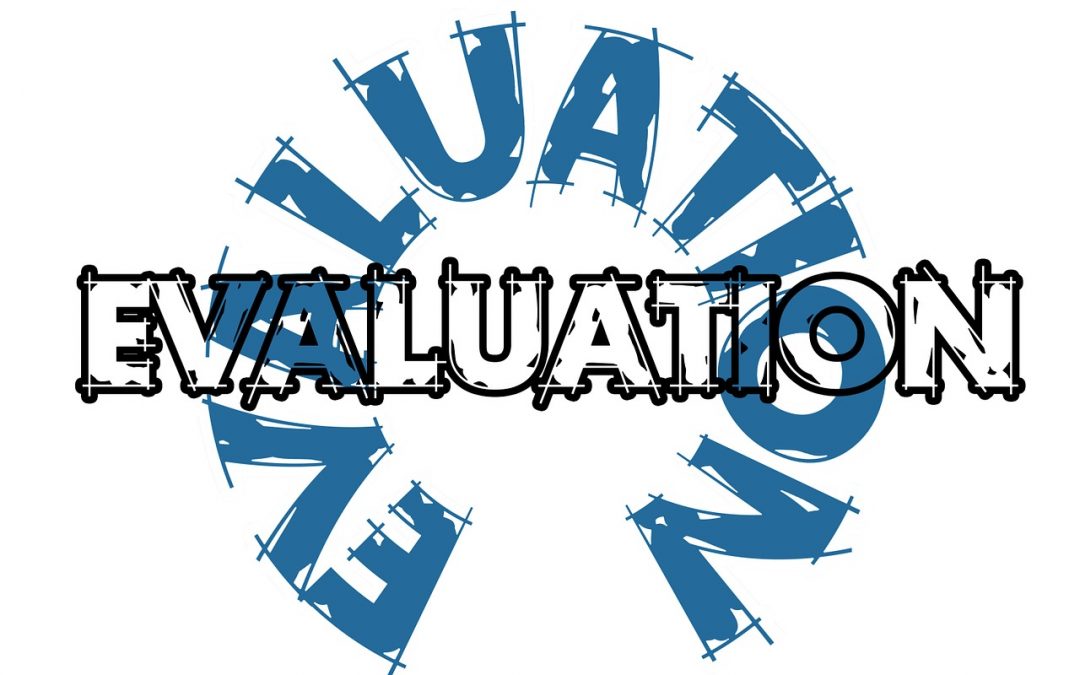
by Employment Screening Alliance | Nov 30, 2016 | employment background check
Employment Background Check | Behind the Scenes
Employment Background Check | When a candidate applies for a position, their potential employer may engage a background check company to help them ensure that the candidate is the best person for the job.
Background checks including reference checks will vary from employer to employer, and from one background screening provider to another, so for simplicity’s sake, let’s take a look at background and reference check scenarios that employers commonly request from a full-service background check firm.
Once an employer has requested a background and a reference check from a third-party provider, that agency may begin by initiating verification’s of employment history, education and credentials checks, if requested by the employer, as well as simultaneously contacting references the candidate has provided.
When requested for candidates working in certain positions, the employer may also ask the agency to provide a report detailing the candidate’s credit history.
Employment History Verification
Using phone or email to directly contact the previous employer, or by using the employer’s designated automated verification service, the agency may verify these facts:
- Start and end dates of employment
- Position / job title
- Salary (when requested by the employer and provided by the company)
Usually the firm will confirm as many employers as required per its customers’ package settings and will document the name and title of the person who supplied the employment information.
The researcher who verified the employment may note the verification with a comment.
The background screening provider may utilize a proprietary database as well as online research to contact an employer.
If the candidate has supplied a contact number, the background check company may use this number if it can authenticate it is a valid business line.
Throughout the process, the verifier will attempt to contact the employer at different times each day.
If the agency needs more info, it may reach out to the candidate and may ask for other means of employment validation, including W2’s or paycheck stubs.
Employment information typically is verified for employment history over the last seven years, but the background check company can attempt to verify further back if necessary.
Education and Credential Verification
While the employment check is occurring, a separate team may simultaneously verify the candidate’s education history.
This component is important to employers as it contains the most-commonly falsified information by candidates on resumes and job applications.
Educational institutions high school and above may be contacted to validate:
- Name of school
- Dates of attendance
- Major area of study
- Diploma, degree or credential awarded
- Date awarded
The agency may contact the candidate to obtain necessary documentation (usually a copy of their degree or certificate) that will either provide additional information to continue the investigation and be provided to the school for authentication.
Professional Reference Checks
The background check provider may offer a professional reference check service based on the contact information for colleagues and coworkers listed on the application.
Interviewers handling reference check questions can contact individuals to get an assessment of the candidate’s capabilities and work record in accordance with client’s guidelines.
Typical questions may include:
- What was the working relationship you had with this person? Length of time worked with?
- How would you describe their interpersonal skills?
- What would you say motivated the individual most?
- What would you say are their strongest attributes?
- Would you rehire/recommend for rehire?
Verification’s are a critical component of the background check process.
Third-party background check providers attempt to deliver speed, and must ensure accuracy to make the experience – for candidate and employer alike – the best experience possible. –HireRight
Learn what ESA can do for you! Call 866-830-3724 to discuss employment background check services or complete the form on
www.esascreening.com now!

by Employment Screening Alliance | Oct 31, 2016 | employment background check
Employment Background Check | 7 Pitfalls to Avoid in Managing Remote Teams Pt. 1
Employment Background Check | Some of the most prominent and successful companies in the world, such as Zapier, Buffer, and Groove, have built a culture out of remote working. Their managers are effective in maintaining the team spirit and the community vibe, although every individual covers the work from home.
However, other companies are having second thoughts about introducing remote teams in their culture. In 2013,Best Buy followed the practice of Reddit and Yahoo by announcing the end of their flexible work program.
Why did these companies, which are famous for relying on technology, decide to change their work-at-home policies? Were they worried about the speed and quality of the work being sacrificed when the workers stayed at home?
As always, there are two sides of the coin.
These are the benefits you’ll most likely experience by promoting a culture of remote teams:
- Lower expenses;
- Access to a greater talent pool;
- Higher productivity; and
- Flexibility
Some managers of remote teams, however, mention these disadvantages:
- Security issues (home-based systems are not as resistant to hacking as office security systems);
- Connectivity problems; and
- Not having full control over the team’s work.
If remote team managers establish effective communication and avoid the most common pitfalls, the pros of this working method will definitely prevail.
Here are 7 pitfalls to avoid in managing remote teams:
1. Paying too much attention to bad examples
Okay, remote team work didn’t work for Reddit, Best Buy, and Yahoo. So what? Does that mean you should completely give up on this idea? Absolutely not! Why not follow the example of companies that did make it work?
The only way to find out what works for your specific company is to analyze its needs and culture. Are the team members capable of working from home? Can you keep remote workers in the loop through virtual means of communication? If you think this could work out, you should certainly give it a try.
Think about it: your workers will be saving a lot of money they would spend on commuting and lunches if they work from home. That sole fact will keep them motivated to do the best job they can. Have a long talk, explain the way the team would function, and feel their vibe. If they are willing to take the business home, you’ll be one step closer to making a good decision.
2. Treating remote workers as individuals
Jim Mullaney, the CEO and founder of Edoc Service, has a nice experience to share about managing remote teams. One of his important recommendations is for the managers to maintain the team spirit as healthily as possible.
“If you’re going to have remote workers, you have to remote them as a team,” – he explains. “Salespeople are often competing with one another, and they’re not interested in other members winning. It’s all about themselves. In a team environment, a win for the team means that everyone has to win, and everyone wants to help one another win.”
That true team spirit has to be maintained even when people work from home. Keep reminding them that they have to support each other for the sake of achieving great results at a group level.
3. Not soliciting feedback
Remote employees are still employees. You still need to know what they think about the job they are doing, and they want to be heard and understood. They have unique ideas that may improve the way the entire team works, so building rapport is one of the main factors that promotes progress.
Try not to keep the communication limited to work, though. You still need to maintain the sense of community, so try to engage them in conversations they would usually have in the office. Start a common message thread to ask how everyone is doing and support the conversation with spontaneous prompts. If you lack ideas, mention the latest episode of Game of Thrones for instance. It’s always a nice conversation starter.
When you manage to maintain the connection beyond work tasks, you’ll be able to congratulate yourself about being a great remote team leader.
4. Allocating the wrong tasks to the wrong people
Remote arrangements can certainly fail if you fail to estimate the capacity of a worker and delegate the wrong tasks to them. Ashley Stewart, the coordinator manager at EduGeeks Club, runs a remote team of writers who complete different tasks for clients. She has to delegate each order to the right member of the team. -Recruit Loop
Learn what ESA can do for you! Call 866-830-3724 to discuss employment background check services or complete the form on
www.esascreening.com now!

by Employment Screening Alliance | Oct 26, 2016 | employment background check
Employment Background Check | Save Time When Screening Resumes
Employment Background Check | The resume provides a first snapshot of your potential new employee. It won’t tell you if someone’s right for the job. But it’s a good way to screen the applicants that clearly aren’t. As a hiring manager, use this to your advantage to save time in the initial employment background screening. Look out for warning signs rather than applicants’ strengths, to get through that pile of resumes faster.
Here are 5 warning signs to help with an initial screening:
1. Excessive length. A great resume can condense everything into one page. While the single-page resume is more common in the US, in Australia most hiring managers are used to 2 pages. But beware anything longer than 3 pages. If a candidate can’t write concisely on one of their most important documents, what hope do they have in business communications?
2. Poor presentation. There’s nothing wrong with using a template to present a resume. But depending on the role, watch out for signs of unoriginality and even laziness. If creativity or attention-to-detail are important requirements, a boring or poorly presented resume is a good warning sign. The web is full of inspiration for truly creative resumes. While not everyone’s a designer, it’s easier than ever to achieve a professional polish.
3. Lack of customisation. We’ve all seen the application that looks like it was written for another role. Did they even read the ad? This is a surefire sign that your applicant is a little careless with details. You’ll know if they took time to tailor their resume to fit your requirements. If it looks like an applicant has sent a generic resume to numerous jobs without considering the specifics of your role, they probably have.
4. Cheesy fonts and sizes. Being creative with a resume is different from being sloppy. A resume that tries to impress with the use of non-standard or ‘artsy’ fonts rarely achieves that objective. It’s more likely a sign of inexperience or unprofessionalism. Forget comic sans. In most business environments you’re looking for sleek, professional formatting that adheres to the standard fonts.
5. The grade10 email address. Plenty of us had one. But then we wised up and upgraded to something mildly more serious. Do you really want your employees logging into webmail at hotstuff_69@hotmail.com? This applicant is either not ready to go of their old ways, or is too lazy to create a more a professional email address. Either way, best not to waste time with someone who is not willing to put in the extra hours to come up with a professional looking resume. -Recruit Loop
Learn what ESA can do for you! Call 866-830-3724 to discuss employment background check services or complete the form on
www.esascreening.com now!

by Employment Screening Alliance | Oct 11, 2016 | employment background check
Employment Background Check | Double-Check: Re-Screening Employees
Employment Background Check | You’ve run a complete background check on all your employees. So you’ve got a safe, fully-vetted workforce, right?
Not necessarily.
While a thorough and professional background check provided a profile of each employee at the time he or she came on board, things may have changed. Times change, conditions change, and people change. And without occasional or regularly-scheduled follow-up background checks of personnel, problems may arise that could seriously impact your business.
Consider: Unlike candidates wishing to join your company, people you’ve already hired may now have access to highly-confidential information including your most sensitive files, phone records, business transactions, contact information, personnel data, and financial secrets. And what they do with such knowledge can seriously affect your company’s brand reputation and even its stability.
Also remember that your employees are in constant contact with your other staff, as well perhaps, with your vendors and your valuable clients. Misinformation, disinformation, innuendo, rumors, and outright lies spread by a disgruntled employee can decimate a business.
If an employee has developed personal problems since his or her initial background check – and you’re in the dark about them – your firm and your other employees could be in jeopardy.
For example, let’s take Susan. She’s been a great manager for five years, following thorough criminal, motor vehicle, and reference checks conducted when she applied for employment with you. Since then, her record’s appeared flawless – “appeared” being the operative term. In fact, she’s being given a promotion!
Actually, last year, Susan got in a tiff with another driver. She lost her cool and punched the other motorist. Someone called 911, the police showed up, and Susan was arrested for assault and battery. She was convicted and got probation.
But you never knew about it.
You also weren’t aware that Susan’s problems escalated. She continued to have anger issues and her significant other left her. Susan fell into deep depression as well as debt. Without a second source of income, she took a second job at night to pay her bills. And then she even began to occasionally steal from your company.
A re-screening could have uncovered the conviction, and may have nipped further problems in the bud. Instead, Susan’s problems have become your problems.
You may want to evaluate whether or not a follow-up background check is legally permissible, and may be prudent for an employee who may have come onboard before you implemented your current background screening policy and practices, and wasn’t screened as thoroughly as you would today.
If a re-screening uncovers nothing, it validates your initial decision to hire that employee, which may instill greater respect and confidence in your personnel security practices.
So consider running another employee background check when someone is promoted, switches departments, or if their last screening was long ago.
HireRight recently surveyed a number of its clients and 42% said they either presently rescreen employees or may begin rescreening employees in the future. The practice is most prevalent in the transportation sector.
Make sure you know your state’s laws before screening current employees. Include your position on subsequent background checks in your company policy, and distinguish between pre-employment and screening of your existing employees. You’ll also want to discuss background check notice and authorization requirements as they may differ from state to state.
Background checks are vital to help ensure you’re bringing on-board a trustworthy and qualified candidate. But conducting routine checks for employees is equally important to facilitating a safe, secure and dependable workforce. -HireRight
Learn what ESA can do for you! Call 866-830-3724 to discuss employment background check services or complete the form on www.esascreening.com now!

by Employment Screening Alliance | Aug 20, 2016 | employment background check
Employment Background Check | A Crucial Check
Employment Background Check | Confirming a job candidate’s past work experience is one of the most important background checks an employer can conduct.
It also represents one of the most common areas where an applicant may falsify information.
According to a HireRight report, in the United States there was a 27 percent discrepancy ratein employment histories based on more than 290,000 employment verifications it conducted in the last six months of 2014.
Looking into a candidate’s past work history can reveal insight into their job stability and loyalty to an employer.
Employers should compare what a candidate claims on their resume with the actual information reported by a background screening company.
Verifications can confirm:
- Job start and end dates
- Titles held
- Salary
- Job duties
- The reason for termination (in some states) and rehire eligibility
Conducting a Verification
First, employers must obtain permission from a candidate before conducting an employment verification. Candidates can deny permission to contact a previous employer, but they can still be asked to provide documentation such as a paystub, W-2 or other tax document to prove their employment.
The same is true when an employer cannot be reached, such as those that are no longer in business. Background screening companies verify previous employment based on its clients guidelines.
Some clients prefer that five years of employment history is verified, while others prefer that the last two employers are verified. Your organization should determine what is reasonable for your industry.
Why This Check is Important
Some candidates may have gaps in their employment history for a variety of reasons.
These reasons can include maternity leave, pursuit of their own small business, returning to school or incarceration.
Some candidates may want to cover these gaps by extending their previous job’s start and end dates.
Some candidates may also falsify higher titles to leverage higher pay.
The 2015 HireRight Benchmarking Report showed that 86 percent of respondents indicated that verifying employment revealed candidates who lied on their resumes or applications.
Conducting employment verification can provide valuable background about a potential employee’s work habits, attitude and integrity.
With the economy rapidly gaining steam, employers are finding an increasingly competitive job market.
Conducting employment verifications are an effective and accurate component in facilitating the integrity of your employee base.
Working with a leading background screening provider can help employers vet candidates that match the employer’s required work experience for the position. –Hireright
Learn what ESA can do for you! Call 866-830-3724 to discuss employment background check services or complete the form on
www.esascreening.com now!

by Employment Screening Alliance | Aug 16, 2016 | employment background check
Employment Background Check | Generation Z Part. 3
Employment Background Check | 2. Showcase examples of integrity as you weave through communications
Without sounding arrogant, go ahead and toot your own horn, but express your righteousness as a responsibility, not a bragging right. Let the Gen Z recruit know that you will expect this trait from them as well, whether it be honesty or helpfulness. You’re not really “telling them what to do,” though, this is more of a precautionary tactic to let them know you’re not trying to trick them into anything or get involved in deceptive business practices.
3. Reveal your company’s social responsibility and community involvement
Dig around for the best example you have positioning your company as a true philanthropic organization. Let the recruit know that this is what they’re about to start contributing to. This is something that will be very important to them. Without a worthy cause, there may not be enough to keep their motivation long enough to complete a project, let alone stay on board for several years.
4. Show them what you’re really offering
Interview face-to-face when you can, or use video as opposed to phone. These kids are after in person communication, and will appreciate that they get to visually and physically experience a taste of the organization you represent. If you’re recruiting long distance, for example, video is the best way to create a hands-on experience. But, if you’re interviewing a Gen Zer who lives in your city, you’ll do best to invite them into the office for your meeting.
5. Consider retention while you are working on recruitment
As you have learned, these recruits aren’t necessarily the best candidates for long term employment at a large sized company. So, when you find serious talent in a Gen Zer, think hard about what might have to happen in order to keep them. Save yourself, and the applicant some time, and try to make the most of the predictions in store for these guys as they enter the worldwide workforce. You will need to take the expected turnover rates very seriously with this group.
Learn what ESA can do for you! Call 866-830-3724 to discuss employment background check services or complete the form on
www.esascreening.com now!





